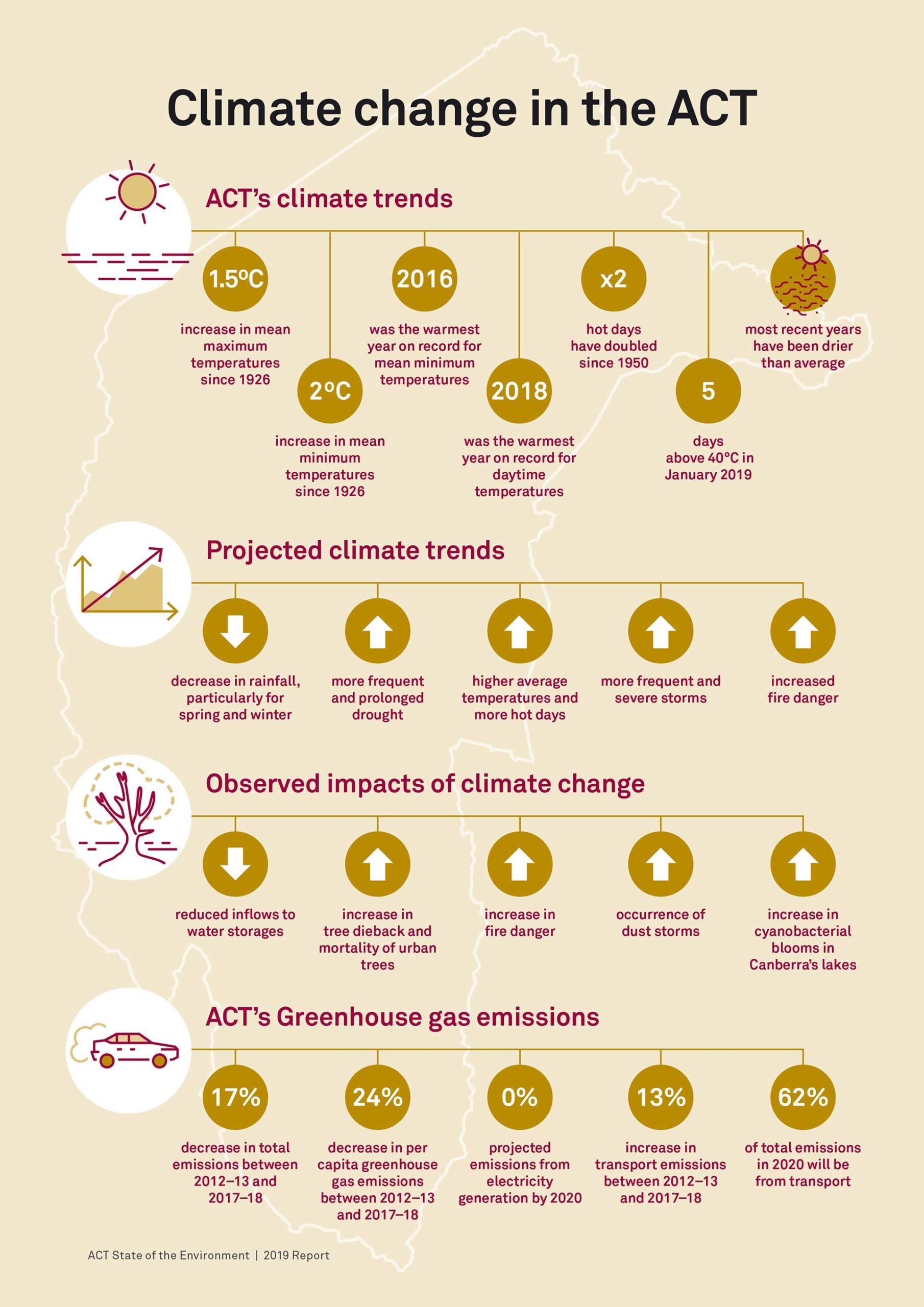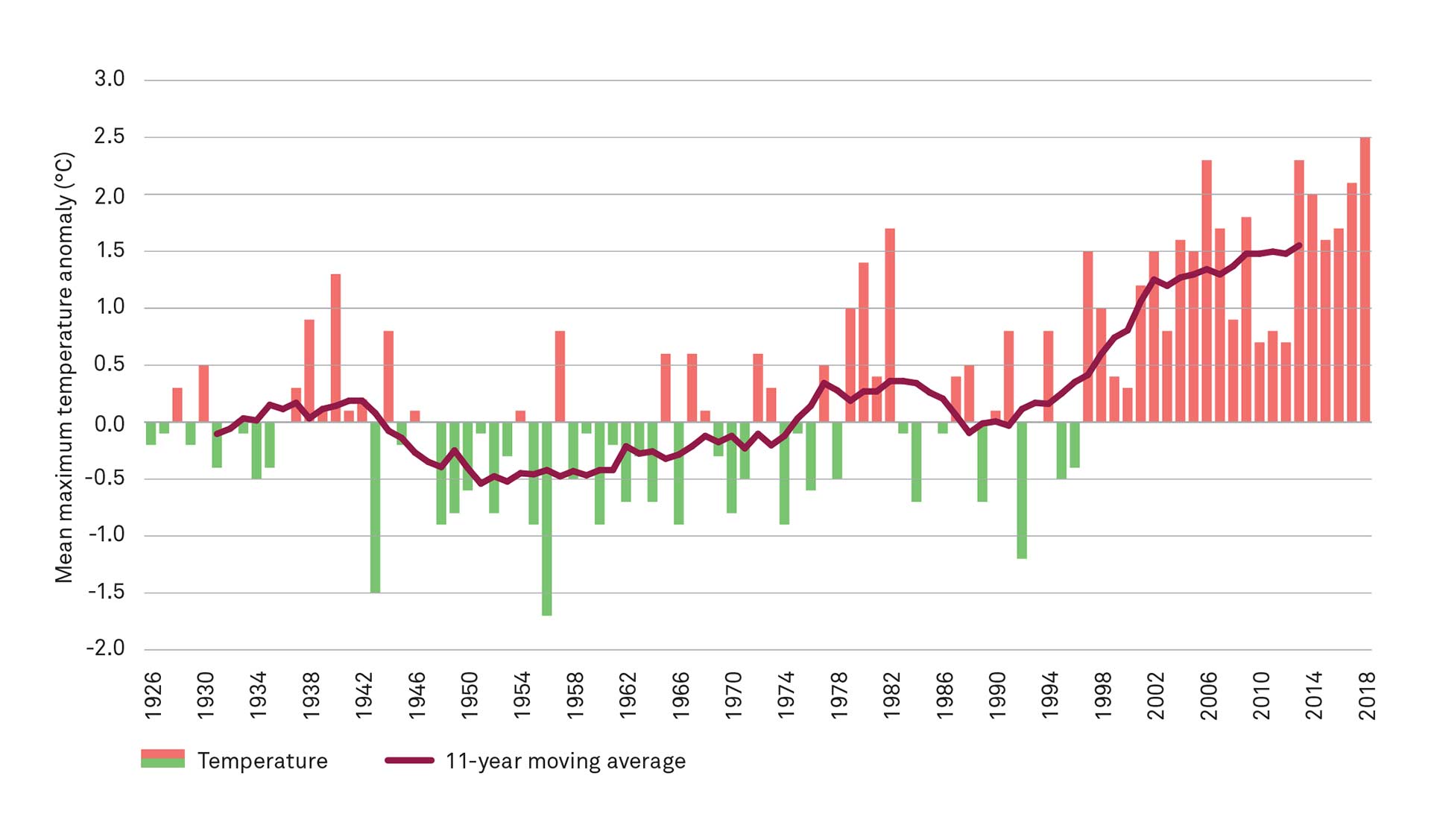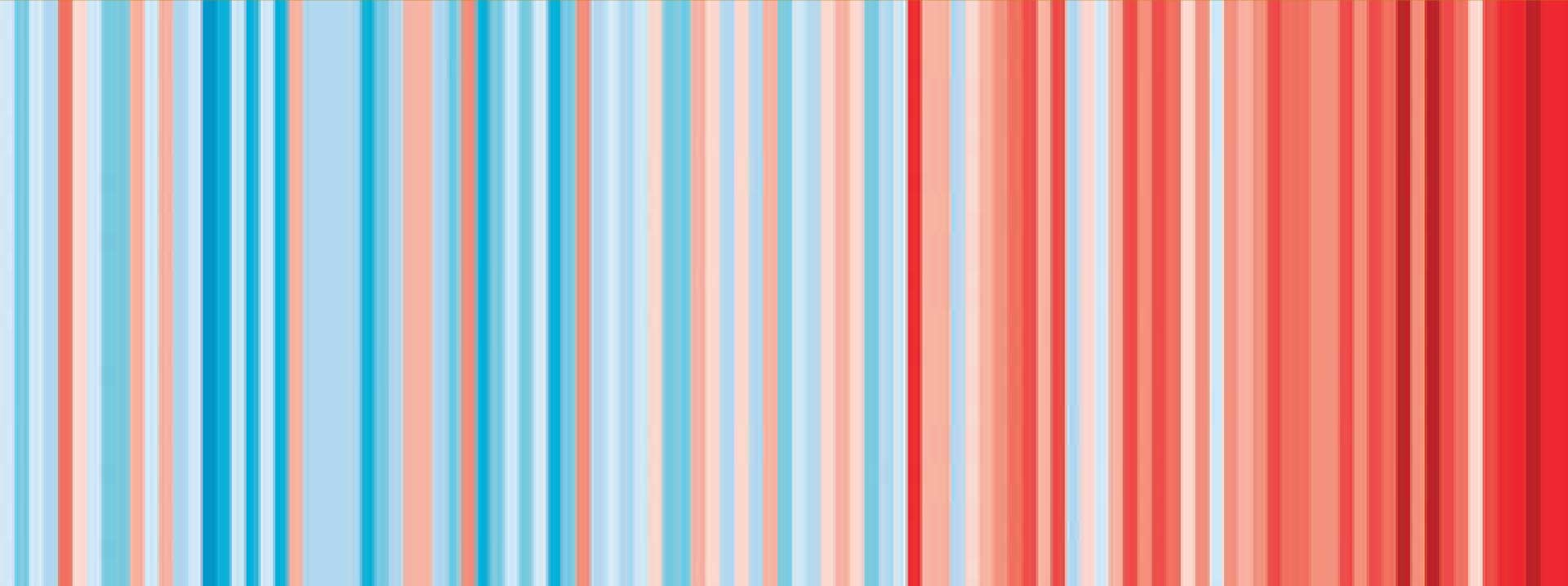- Canberra’s climate is changing
- Impacts of climate change on the ACT environment and community
- Future climate change impacts
- ACT’s greenhouse gas emissions
- Future greenhouse gas reductions
What are the main climate change findings from the 2019 ACT State of the Environment Report? See the infographic and video below to find out.
Canberra’s climate is changing
Climate change is a global problem but it is affecting all Canberrans – and it will continue to do so for decades to come. Climate is changing in the ACT, with increasing temperatures, more hot days, and more years with lower annual rainfall.
Canberra’s annual average maximum temperatures have risen by over 1.5 °C since records began in 1926. Overnight minimum temperatures have risen more, by around 2 °C. Since 2013, every year has been one of the ACT’s warmest years on record, with 2018 the warmest year ever recorded for daytime temperatures.
Extreme events are already becoming more frequent in the ACT because of climate change: the number of hot days has doubled since 1950. Since 2007, Canberra has experienced 16 days above 40 °C, something that didn’t occur even once between 1975 and 2000. There have been far more monthly heat records broken in NSW and the ACT than cold weather records.
The 2019-20 summer was one of extreme temperatures. On 4 January 2020, the ACT had its hottest day on record at 44°C. The mean maximum and minimum temperatures over the summer were the third warmest on record. These temperatures, combined with below-average rainfall, provided the optimum conditions for the large and severe bushfiresA fire that burns in grass, bush or woodland and can threate More that occurred (see Fire and its impacts section).
Rainfall is also changing in the ACT. Although there is considerable annual variation, most years since 2000 have been drier than average.
Impacts of climate change on the ACT environment and community
The changes in climate are affecting Canberrans, the economy and the ACT’s natural environment. Some impacts of climate change include:
- With lower rainfall in most years, there is less water flowing through the ACT’s rivers and into Canberra’s reservoirs (see Human settlements and the environment section).
- Higher temperatures lead to more algal blooms in Canberra’s lakes.
- Hot and dry days across South East Australia create dust storms that move across the ACT.
- Hot weather and lower rainfall mean more trees have been dying in the ACT’s urban areas, parks and reserves (see Trees in the city section.
- Hot weather and drier conditions have increased fire danger with an increase in the number of days with a very high fire danger rating. The 2018–19 bushfireA fire that burns in grass, bush or woodland and can threate More season was the longest in the ACT since 2003. These conditions led to the devastating fires over the 2019–20 summer (see The 2019-20 fire season breakout box).
About a third of all Canberrans are highly vulnerable to the likely harm caused by climate change: 36 per cent of people live in homes that become very hot during heatwaves, and nearly 40 per cent are unprepared for extreme weather events.
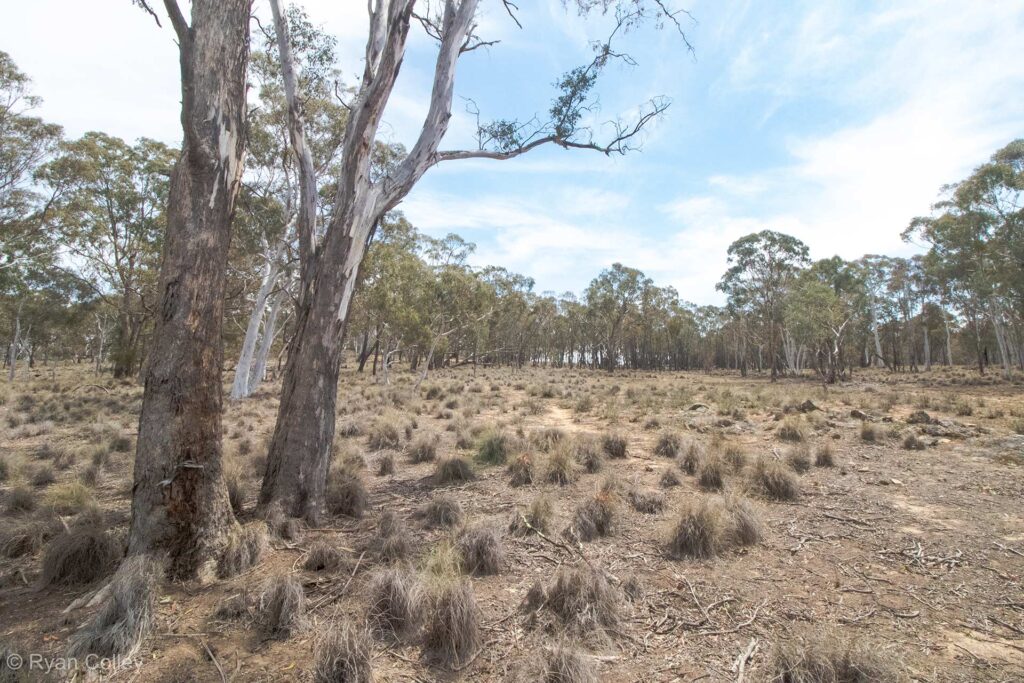
Future climate change impacts
Scientists have used computer simulations of the Earth to show that future climate will have higher temperatures and decreased rainfall. The Intergovernmental Panel on Climate Change (IPCC) reports that global warming may be between 0.3 and 4.8 °C by 2100, depending on the amount of greenhouse gasesA gas in the atmosphere (such as carbon dioxide, methane and More released and their impact on climate. In Canberra, the global trend will mean an increase in the frequency, severity and duration of heatwaves, more frequent and prolonged drought, a greater number of heat-related deaths, and greater fire risks. The IPCC also reports that extreme rainfall and storms are very likely to become more intense and more frequent over areas such as eastern Australia, with flash flooding, strong winds, and thunderstorms. However, there may be an overall decrease in rainfall in the ACT, particularly during spring and winter.
ACT’s greenhouse gas emissions
Although the ACT’s emissions are only a small contribution to global emissions, the combined reductions from many regions across the world will substantially contribute to minimising the severity of future climate change.
We each have a responsibility to preserve our environment. This responsibility means that all of us – individuals, government, businesses and companies – need to make changes, including to our lifestyles.
In 2017–18, the ACT’s total greenhouse gasA gas in the atmosphere (such as carbon dioxide, methane and More emissions were 3,368 thousand tonnes of carbon dioxide equivalentA measure of all greenhouse gases, including carbon dioxide, More (also called CO2-e). That’s eight tonnes for each person living in the ACT. But the ACT will soon generate all electricity from renewable energyEnergy produced from natural sources that are constantly rep More sources such as wind and solar. This means that the region’s greenhouse gasA gas in the atmosphere (such as carbon dioxide, methane and More emissions from electricity will decrease to zero. The ACT’s total emissions will decrease to around 1,918 thousand tonnes of carbon dioxide equivalentA measure of all greenhouse gases, including carbon dioxide, More per year – or 4.5 tonnes for each person living in the ACT. This reduction in greenhouse gasA gas in the atmosphere (such as carbon dioxide, methane and More emissions, along with ambitious targets to achieve zero net greenhouse gasA gas in the atmosphere (such as carbon dioxide, methane and More emissions by 2045, makes the ACT a global leader in climate policy and reducing emissions.
Future greenhouse gas reductions
As the contribution of greenhouse gasesA gas in the atmosphere (such as carbon dioxide, methane and More from electricity generation decreases to zero, transport will become the ACT’s biggest source of greenhouse gasA gas in the atmosphere (such as carbon dioxide, methane and More emissions. Natural gas for electricity and heating, and emissions from waste will also increase their percentage contribution. Therefore, reducing transport (particularly diesel), natural gas use and waste generation will become the main focus for reductions of greenhouse gasA gas in the atmosphere (such as carbon dioxide, methane and More emissions in the ACT. The ACT’s population growth will also present challenges to further reductions.
Government and community actions are key to decreasing greenhouse gasA gas in the atmosphere (such as carbon dioxide, methane and More emissions, such as through reducing the consumption of energy (including transport fuels) and goods, choosing environmentally friendly products, improving recycling and reuse, and increasing native vegetation in urban and cleared areas. For example, to cut transport emissions, we need to reduce the number of vehicles and how often they are used. Canberrans will need to increase their use of public transport and active travel options such as cycling and walking. An increase in electric vehicles will also help lower the ACT’s greenhouse gasA gas in the atmosphere (such as carbon dioxide, methane and More emissions.

